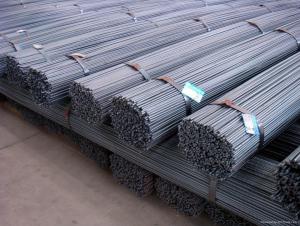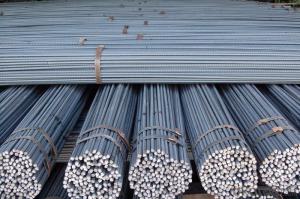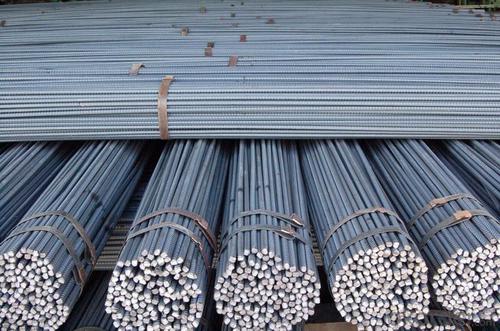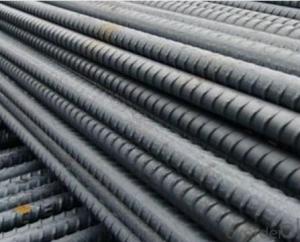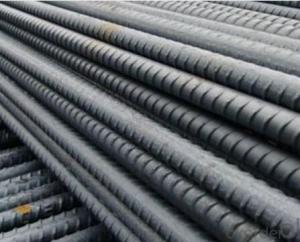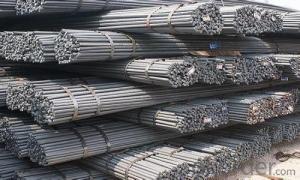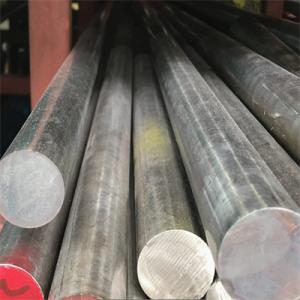Rebar Weight Per Foot - Deformed Bars Hot Rolled GB HRB400
- Loading Port:
- Tianjin
- Payment Terms:
- TT OR LC
- Min Order Qty:
- 25 m.t.
- Supply Capability:
- 10000 m.t./month
OKorder Service Pledge
OKorder Financial Service
You Might Also Like
Product Description:
OKorder is offering high quality Hot Rolled Rebars at great prices with worldwide shipping. Our supplier is a world-class manufacturer of steel, with our products utilized the world over. OKorder annually supplies products to European, North American and Asian markets. We provide quotations within 24 hours of receiving an inquiry and guarantee competitive prices.
Product Applications:
Deformed bar is widely used in buildings, bridges, roads and other engineering construction. Big to highways, railways, bridges, culverts, tunnels, public facilities such as flood control, dam, small to housing construction, beam, column, wall and the foundation of the plate, deformed bar is an integral structure material. With the development of world economy and the vigorous development of infrastructure construction, real estate, the demand for deformed bar will be larger and larger..
Label: to be specified by customer, generally, each bundle has 1-2 labels
Product Advantages:
OKorder's Hot Rolled Rebars are durable, strong, and resist corrosion.
Main Product Features:
· Premium quality
· Prompt delivery & seaworthy packing (30 days after receiving deposit)
· Corrosion resistance
· Can be recycled and reused
· Mill test certification
· Professional Service
· Competitive pricing
Product Specifications:
Manufacture: Hot rolled
Grade: HRB400 – HRB500
Certificates: ISO, SGS, BV, CIQ
Length: 6m – 12m, as per customer request
Packaging: Export packing, nude packing, bundled
Grade | Technical data of the original chemical composition (%) | ||||||
C | Mn | Si | S | P | V | ||
HRB400 | ≤0.25 | ≤1.60 | ≤0.80 | ≤0.045 | ≤0.045 | 0.04-0.12 | |
Physical capability | |||||||
Yield Strength (N/cm²) | Tensile Strength (N/cm²) | Elongation (%) | |||||
≥400 | ≥570 | ≥14 | |||||
Theoretical weight and section area of each diameter as below for your information:
Diameter(mm) | Section area (mm²) | Mass(kg/m) | Weight of 12m bar(kg) |
6 | 28.27 | 0.222 | 2.664 |
8 | 50.27 | 0.395 | 4.74 |
10 | 78.54 | 0.617 | 7.404 |
12 | 113.1 | 0.888 | 10.656 |
14 | 153.9 | 1.21 | 14.52 |
16 | 201.1 | 1.58 | 18.96 |
18 | 254.5 | 2.00 | 24 |
20 | 314.2 | 2.47 | 29.64 |
22 | 380.1 | 2.98 | 35.76 |
25 | 490.9 | 3.85 | 46.2 |
28 | 615.8 | 4.83 | 57.96 |
32 | 804.2 | 6.31 | 75.72 |
36 | 1018 | 7.99 | 98.88 |
40 | 1257 | 9.87 | 118.44 |
50 | 1964 | 15.42 | 185.04 |
FAQ:
Q1: Why buy Materials & Equipment from OKorder.com?
A1: All products offered byOKorder.com are carefully selected from China's most reliable manufacturing enterprises. Through its ISO certifications, OKorder.com adheres to the highest standards and a commitment to supply chain safety and customer satisfaction.
Q2: Can stainless steel rust?
A2: Stainless does not "rust" as you think of regular steel rusting with a red oxide on the surface that flakes off. If you see red rust it is probably due to some iron particles that have contaminated the surface of the stainless steel and it is these iron particles that are rusting. Look at the source of the rusting and see if you can remove it from the surface.
Q3: What is the normal tolerance of Hot Rolled Mild Steel Angle Beams for Structures and for Buildings?
A3: Normally 3%-5%, but we can also produce the goods according to the customers' requests.
Images
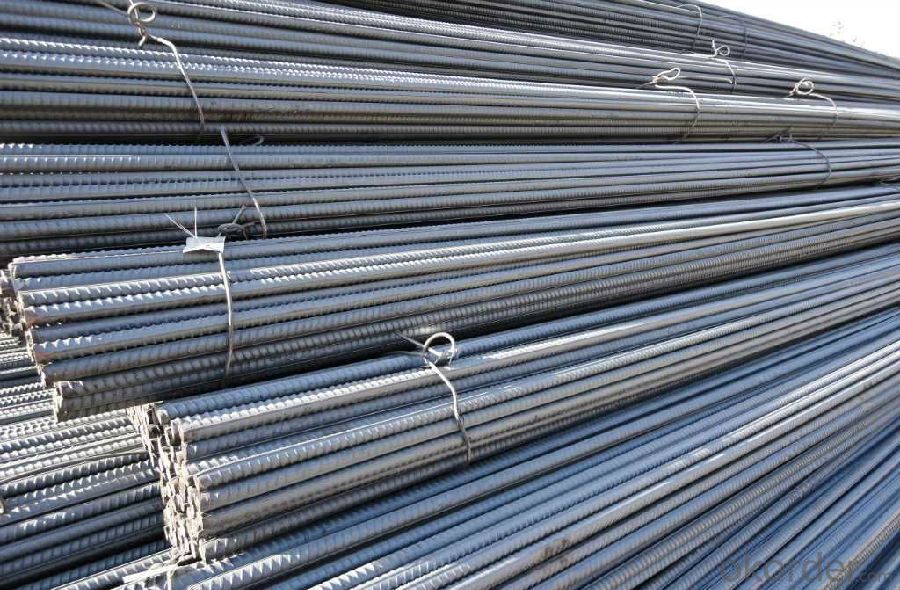
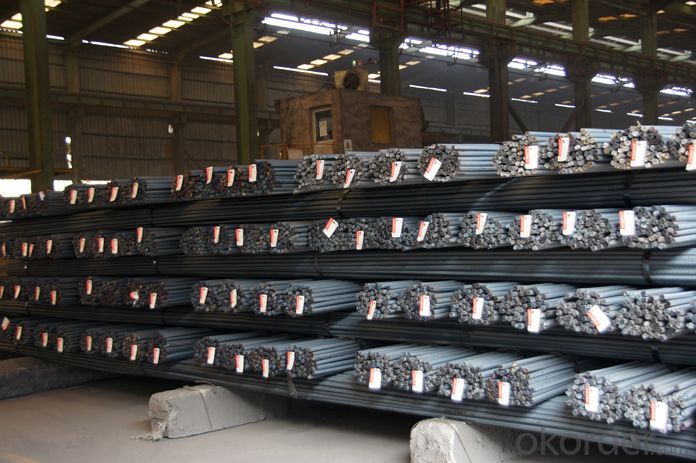
- Q:How can the quality of steel rebars be tested?
- The quality of steel rebars can be tested through various methods such as visual inspection, dimensional measurement, destructive testing (such as tensile strength and elongation tests), non-destructive testing (such as ultrasonic testing, magnetic particle inspection, and radiographic testing), chemical analysis, and corrosion resistance evaluation. These methods collectively ensure that the steel rebars meet the required quality standards and are free from defects or weaknesses.
- Q:How are steel rebars protected from rusting during storage?
- Steel rebars are protected from rusting during storage by applying a protective coating, such as epoxy or zinc, to the surface. This coating acts as a barrier, preventing moisture and oxygen from reaching the steel and causing corrosion. Additionally, rebars are often stored in a dry and controlled environment to further minimize the risk of rust formation.
- Q:How do steel rebars contribute to the overall stability of a bridge deck?
- Steel rebars contribute to the overall stability of a bridge deck by providing reinforcement and strength to the concrete structure. The rebars are embedded within the concrete, creating a composite material that is able to withstand the loads and stresses imposed on the bridge. This reinforcement helps to prevent cracking, bending, and failure of the bridge deck, ensuring its long-term durability and structural integrity.
- Q:What is the effect of aging on the properties of steel rebars?
- The effect of aging on the properties of steel rebars can have both positive and negative impacts. Over time, steel rebars undergo a process called aging, which involves gradual changes in their microstructure and mechanical properties. One of the primary effects of aging on steel rebars is the increase in strength and hardness. As the steel rebars age, the carbon atoms within the steel begin to form carbides, which leads to an increase in strength. This increased strength can be beneficial in structural applications, as it provides additional support and resistance to external forces and loads. However, aging can also have negative effects on steel rebars. As the rebars age, they become more susceptible to corrosion. The formation of carbides during aging can create localized areas of low carbon content, known as decarburization, which makes the rebars more prone to rust and corrosion. This can compromise the structural integrity of the rebars and reduce their lifespan. Furthermore, aging can lead to embrittlement of the steel rebars. As the rebars age, the microstructure undergoes changes that can result in increased brittleness and reduced ductility. This can make the rebars more prone to cracking and failure under certain conditions, such as when exposed to excessive loads or extreme temperatures. Overall, the effect of aging on the properties of steel rebars is a complex phenomenon that involves both positive and negative consequences. While aging can enhance the strength and hardness of the rebars, it also increases the risk of corrosion and embrittlement. Proper maintenance and monitoring are essential to mitigate the negative effects of aging and ensure the long-term performance and durability of steel rebars in structural applications.
- Q:How do steel rebars affect the thermal properties of a structure?
- The thermal properties of a building or structure can be significantly influenced by steel rebars, which are commonly used in reinforced concrete structures. To begin with, steel rebars have a higher thermal conductivity than concrete. This means that when embedded within concrete, they can serve as thermal bridges, allowing heat to easily transfer through the structure. Consequently, there is increased heat loss during colder months and increased heat gain during warmer months, leading to higher energy consumption for heating and cooling. Additionally, the thermal expansion and contraction of the structure can be affected by steel rebars. Compared to concrete, steel has a higher coefficient of thermal expansion, causing it to expand and contract more with temperature changes. This differential movement between the steel rebars and the surrounding concrete can result in cracks and structural deformations, compromising the overall thermal performance of the structure. Moreover, the moisture behavior of a structure can also be influenced by steel rebars. As previously mentioned, steel has a higher thermal conductivity and electrical conductivity than concrete. This electrical conductivity can promote the corrosion of steel rebars when they come into contact with moisture or water. Consequently, corrosion leads to the formation of rust, which expands and further damages the surrounding concrete. This, in turn, increases moisture ingress, compromising the insulation properties of the structure and potentially causing mold growth and other moisture-related issues. To conclude, steel rebars have direct and indirect impacts on the thermal properties of a structure. They act as thermal bridges, affecting heat transfer, and their differential thermal expansion and corrosion potential can compromise the overall thermal performance and moisture behavior of the structure. Proper design, insulation, and corrosion protection measures should be implemented to mitigate these effects and ensure optimal thermal performance.
- Q:What is the effect of improper handling on the quality of steel rebars?
- Improper handling of steel rebars can have a significant negative effect on their quality. It can lead to various issues such as bending, warping, or damage to the surface of the rebars. This can compromise their structural integrity and reduce their overall strength and durability. Furthermore, improper handling can also introduce contaminants or impurities to the rebars, which can further degrade their quality and potentially lead to corrosion or other long-term damage. Therefore, proper handling techniques are essential to maintain the quality and performance of steel rebars in construction projects.
- Q:How are steel rebars installed in concrete?
- Steel rebars are installed in concrete by first placing them in the desired locations within the concrete formwork. The rebars are then secured in place using wire ties or rebar chairs to ensure they remain in the correct position during the pouring and curing process. This helps to reinforce the concrete and provide strength to the structure.
- Q:What is the difference between deformed and plain steel rebars?
- Deformed steel rebars have ribbed surfaces that provide enhanced bonding with concrete, resulting in improved structural stability. On the other hand, plain steel rebars are smooth in texture and lack the gripping ability of deformed rebars.
- Q:How are steel rebars used in flat slabs and beams?
- Steel rebars are used in flat slabs and beams to provide tensile strength and reinforce the concrete structure. They are placed within the concrete to enhance its ability to handle tensile forces, which are typically higher in flat slabs and beams. The rebars help prevent cracking and increase the overall stability and load-bearing capacity of the structure.
- Q:How are steel rebars classified based on their shapes?
- Steel rebars are classified based on their shapes into different categories such as round, square, deformed, and flat rebars.
1. Manufacturer Overview |
|
|---|---|
| Location | |
| Year Established | |
| Annual Output Value | |
| Main Markets | |
| Company Certifications | |
2. Manufacturer Certificates |
|
|---|---|
| a) Certification Name | |
| Range | |
| Reference | |
| Validity Period | |
3. Manufacturer Capability |
|
|---|---|
| a)Trade Capacity | |
| Nearest Port | |
| Export Percentage | |
| No.of Employees in Trade Department | |
| Language Spoken: | |
| b)Factory Information | |
| Factory Size: | |
| No. of Production Lines | |
| Contract Manufacturing | |
| Product Price Range | |
Send your message to us
Rebar Weight Per Foot - Deformed Bars Hot Rolled GB HRB400
- Loading Port:
- Tianjin
- Payment Terms:
- TT OR LC
- Min Order Qty:
- 25 m.t.
- Supply Capability:
- 10000 m.t./month
OKorder Service Pledge
OKorder Financial Service
Similar products
New products
Hot products
Hot Searches
Related keywords
